The first class students have at High Trails is the Team Discovery Hike, where they get to know each other better, learn about the plants and animals native to the region…and hear about the history of Big Bear. The local history always interests students and they ask awesome questions which, until recently, I could not fully answer.
But with one trip to the local Big Bear Valley Historical Museum that all changed.
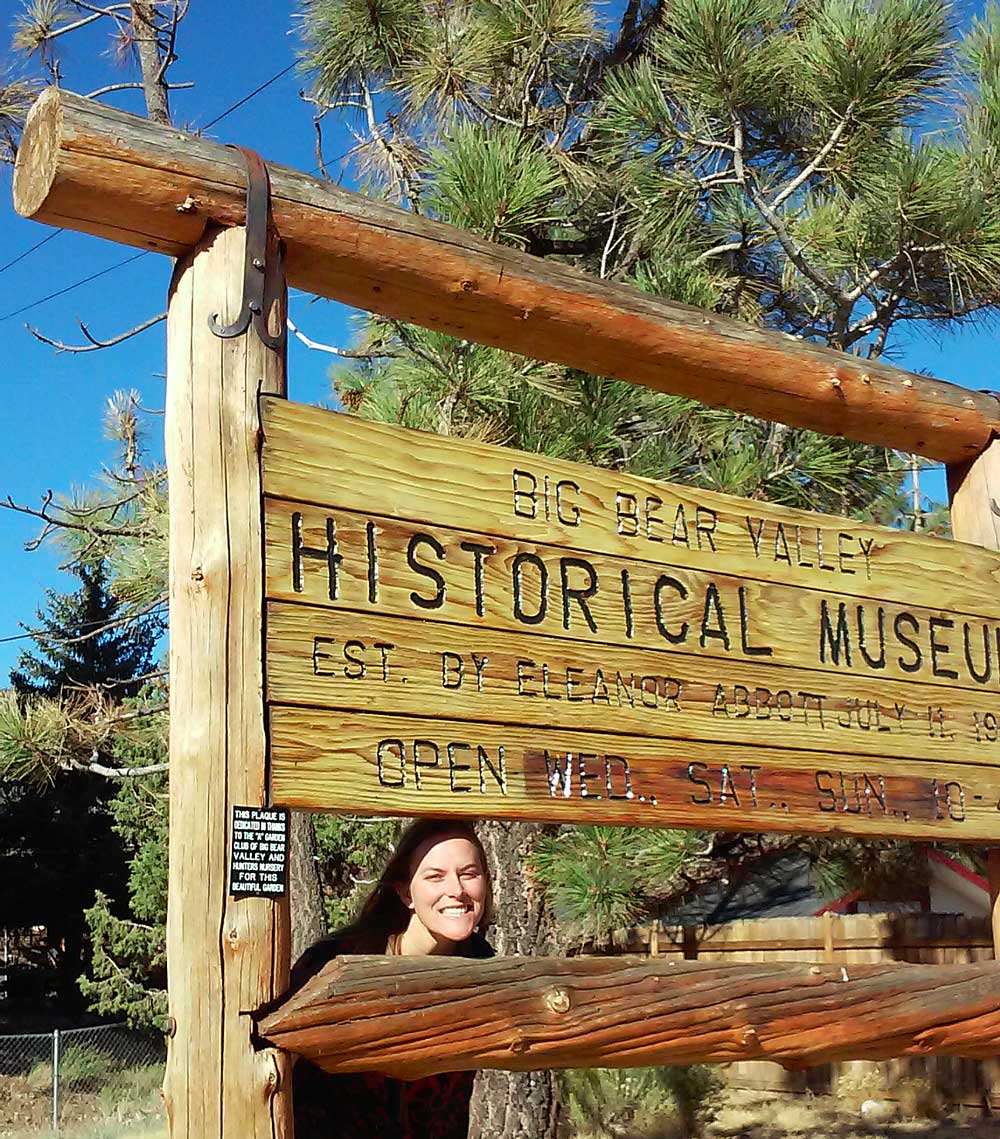 The Big Bear Valley Historical Museum is full of artifacts, historical buildings, and information. Through this visit and the assistance of the extremely helpful and friendly curators, I was able to find out so much about the town of Big Bear.
The Big Bear Valley Historical Museum is full of artifacts, historical buildings, and information. Through this visit and the assistance of the extremely helpful and friendly curators, I was able to find out so much about the town of Big Bear.
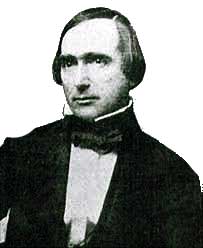
Benjamin Wilson
The first explorers to Big Bear were led by Benjamin Wilson in 1845. They came up the mountain from San Bernardino to catch cattle rustlers and, while that plan may have not come to fruition, Benjamin Wilson and a small contingent stumbled upon a swampy lake filled with bears. I’m sure you guessed it; they discovered the area currently known as Big Bear.
The lake they found is, what we call, Baldwin Lake, and the swampy area would later become Big Bear Lake. But I’m getting ahead of myself. Wilson and his men named the area after all the grizzly bears they found there, and returned to San Bernardino with tales of beauty, descriptions of nature, and 22 bear pelts.
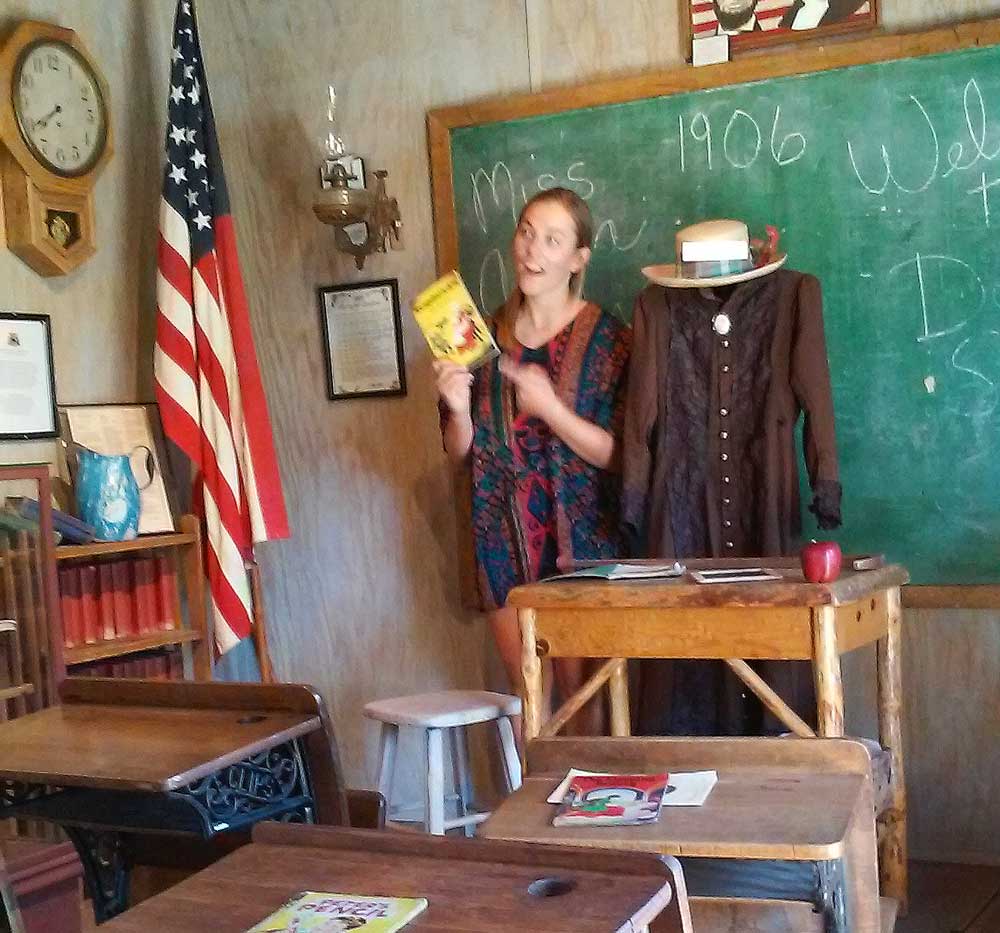 Since then, Big Bear has attracted people of all sorts. The next group to travel up the mountain came in search of gold. In an era when gold was being found all over Northern California, some explorers went down south to try their luck. They started placer mining for gold in Starvation Flats and had some luck. William “Bill” Holcomb heard of this gold being found in the area and struck it rich in 1860 when he decided to mine in a nearby valley that now bears his name.
Since then, Big Bear has attracted people of all sorts. The next group to travel up the mountain came in search of gold. In an era when gold was being found all over Northern California, some explorers went down south to try their luck. They started placer mining for gold in Starvation Flats and had some luck. William “Bill” Holcomb heard of this gold being found in the area and struck it rich in 1860 when he decided to mine in a nearby valley that now bears his name.
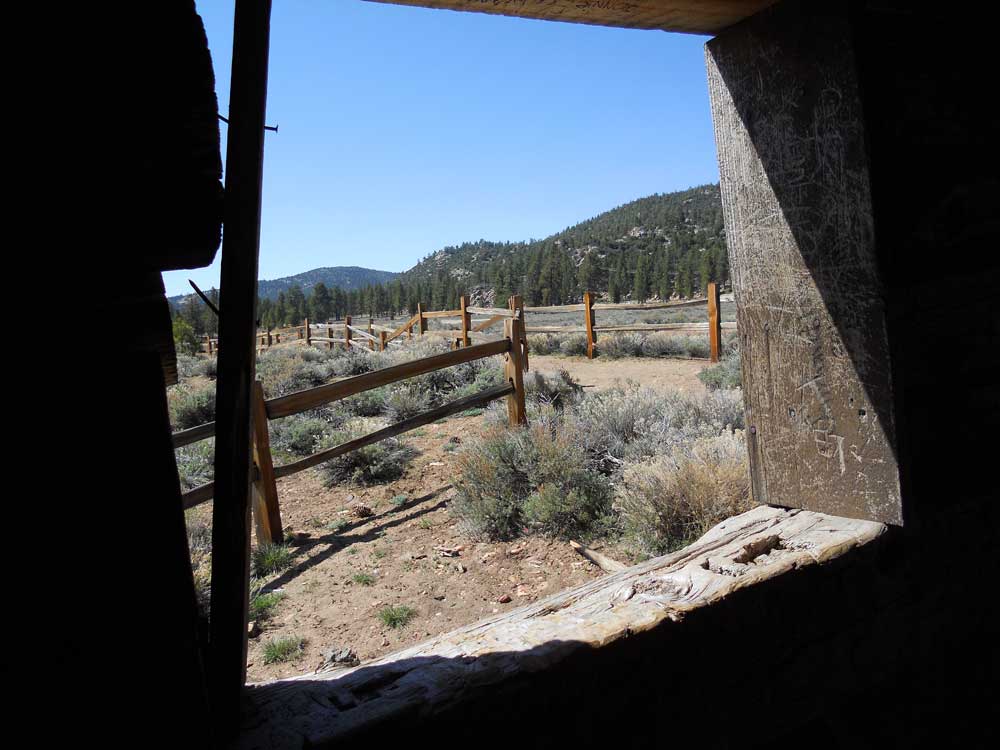
The view from an old cabin out in Holcomb Valley
This discovery of Holcomb Valley sparked the largest gold rush in Southern California that lasted for nearly 20 years! Many mining towns sprang up in the area for a short mining boom. The gold rush brought miners, businesses, and families to the area. There are old remnants of cabins and sluices up in the hills, and many artifacts can still be found around town and in exhibits at the museum. During my visit, I got to learn how to pan for gold and saw many machines used during the boom.
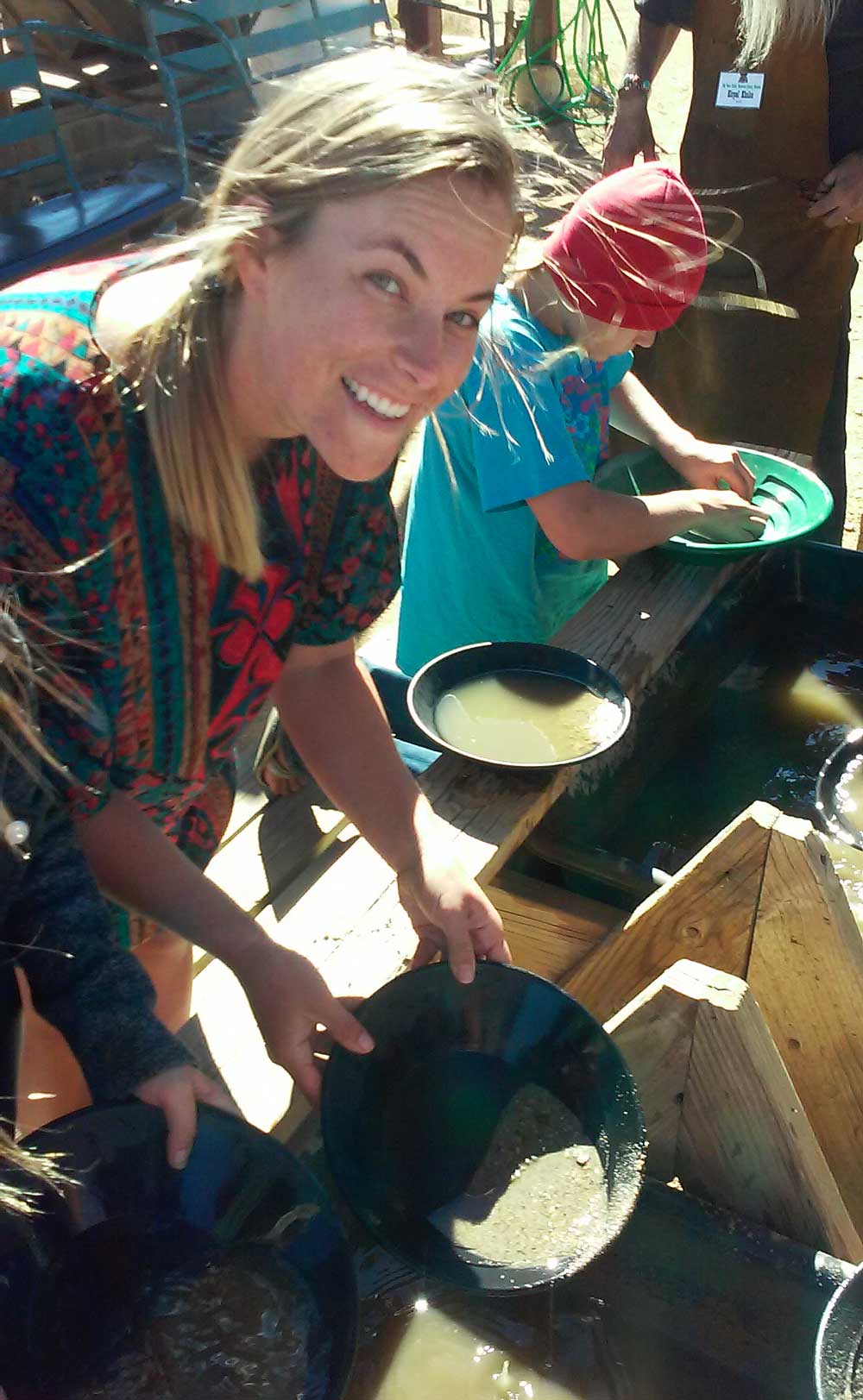
Christine striking it rich at the Big Bear Valley Historical Museum
With the influx of people coming along to mine the mountains, the industry and population of Big Bear started to grow. Logging started in the 1850s and grew along with mining until the last sawmill closed in the 1920s. Bears were hunted, and eventually the grizzly bears that were once so plentiful in the region went extinct in the area. Black Bears were later introduced (they are not native to Big Bear!) and still exist in the region today. Cattle ranching was established in the area and large ranches existed for many years, with names of the more famous ranchers still lingering in names of roads and places around town. To make it really western, there were round ups, rodeos, and even cattle rustlers.
1883 was a monumental year for the area when construction of the dam started. The dam was built and owned by the Bear Valley Land and Water Company and was originally built to supply water below to the city of Redlands for their orange groves. It was completed in 1884. The dam was a remarkable feat, creating the largest man-made lake in the world at the time! In 1911 a new dam was built, tripling the size of the lake, and with upgrades made in the 1980s, it still stands today.
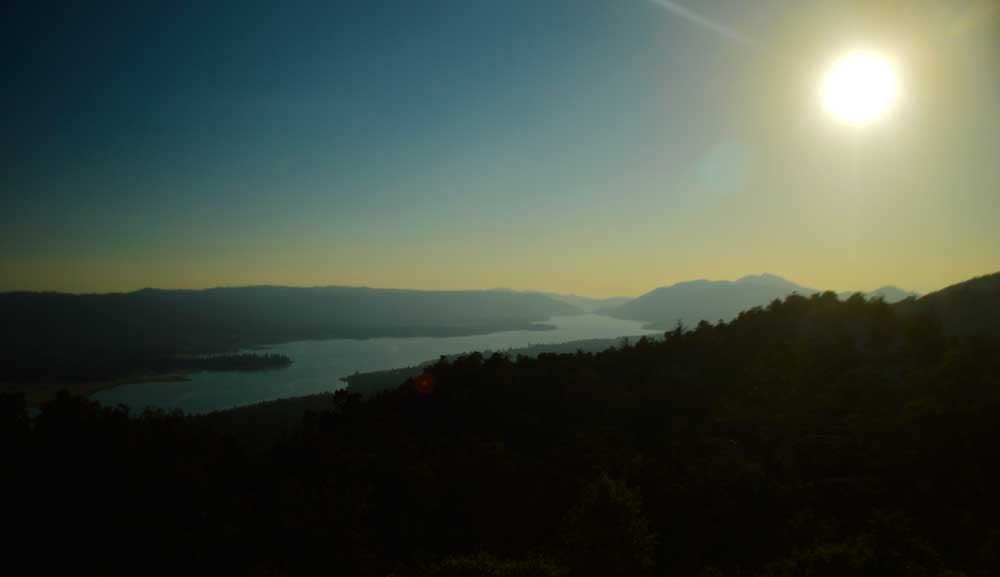 Once there was a large lake, the city of Big Bear really developed. People came to visit the new resort town, so unlike the typical Southern California cities around it, but not too far away. Around the turn of the century, a toll road was established for visitors to come to the mountain lake. Soon after, more roads were established to get people up the mountain. The lake was originally know as Bear Lake, but with more visitors coming, it soon became known as Big Bear Lake to distinguish from Little Bear Lake, now known as Arrowhead.
Once there was a large lake, the city of Big Bear really developed. People came to visit the new resort town, so unlike the typical Southern California cities around it, but not too far away. Around the turn of the century, a toll road was established for visitors to come to the mountain lake. Soon after, more roads were established to get people up the mountain. The lake was originally know as Bear Lake, but with more visitors coming, it soon became known as Big Bear Lake to distinguish from Little Bear Lake, now known as Arrowhead.
Camps and hotels popped up all around Big Bear Lake to host all the tourists. Resorts came soon after. The Peter Pan Resort was one famous destination, and although some of it burned down (due to the highly flammable newspaper stuffed in the walls for insulation) I was able to tour the caddy-shack that still stands at the museum. The streets named Wendy, Darling, Tinkerbell, and such in Big Bear City are all nods to this old resort. With all the new popularity of the beautiful place, Hollywood soon caught on, and many films and television shows have been filmed in the area.
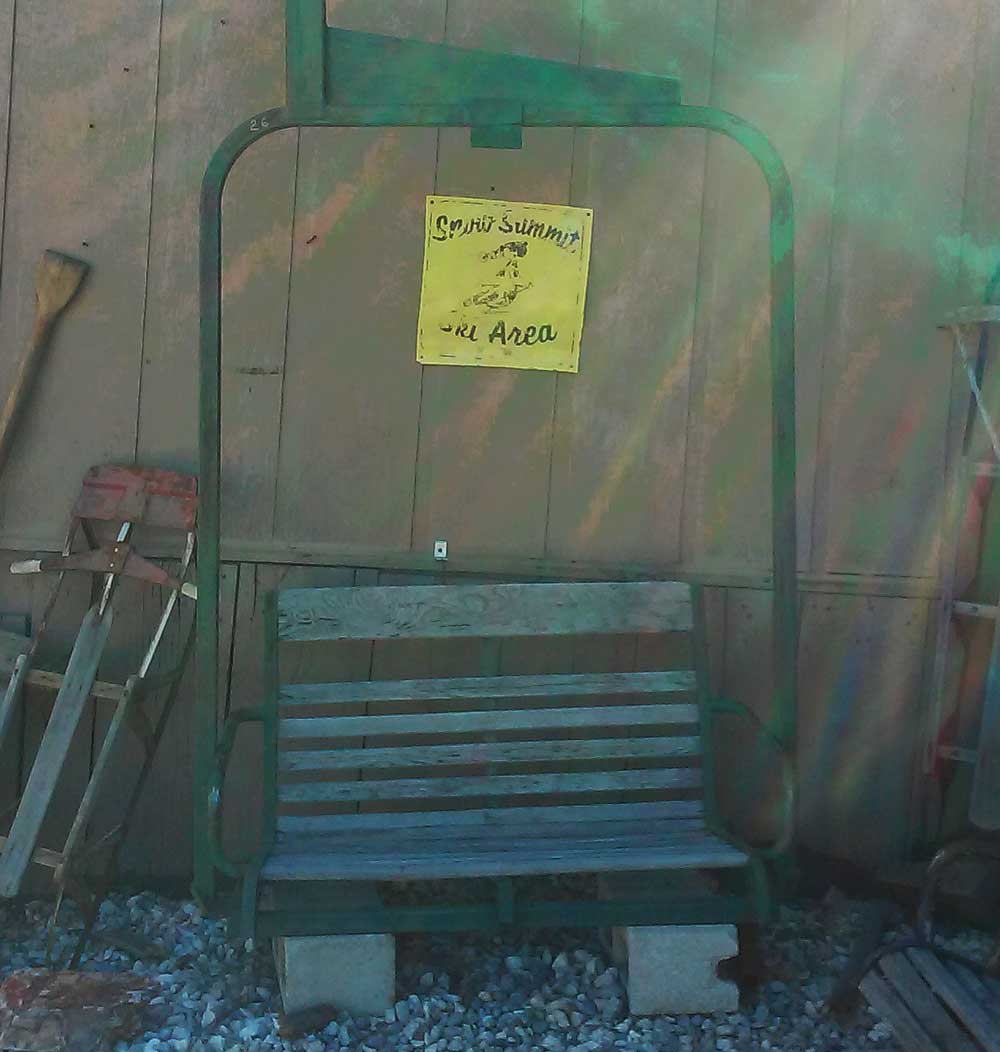 In the 1930s, a chair lift was built to attract winter sport enthusiasts. The museum has some of the original ski lift chairs on display! Snow Summit was opened as a major ski resort in the 1950s, and has been a popular destination ever since. With all these attractions set in the beautiful San Bernardino Mountains, it is no wonder that Big Bear is now the most popular year round resort town in Southern California.
In the 1930s, a chair lift was built to attract winter sport enthusiasts. The museum has some of the original ski lift chairs on display! Snow Summit was opened as a major ski resort in the 1950s, and has been a popular destination ever since. With all these attractions set in the beautiful San Bernardino Mountains, it is no wonder that Big Bear is now the most popular year round resort town in Southern California.
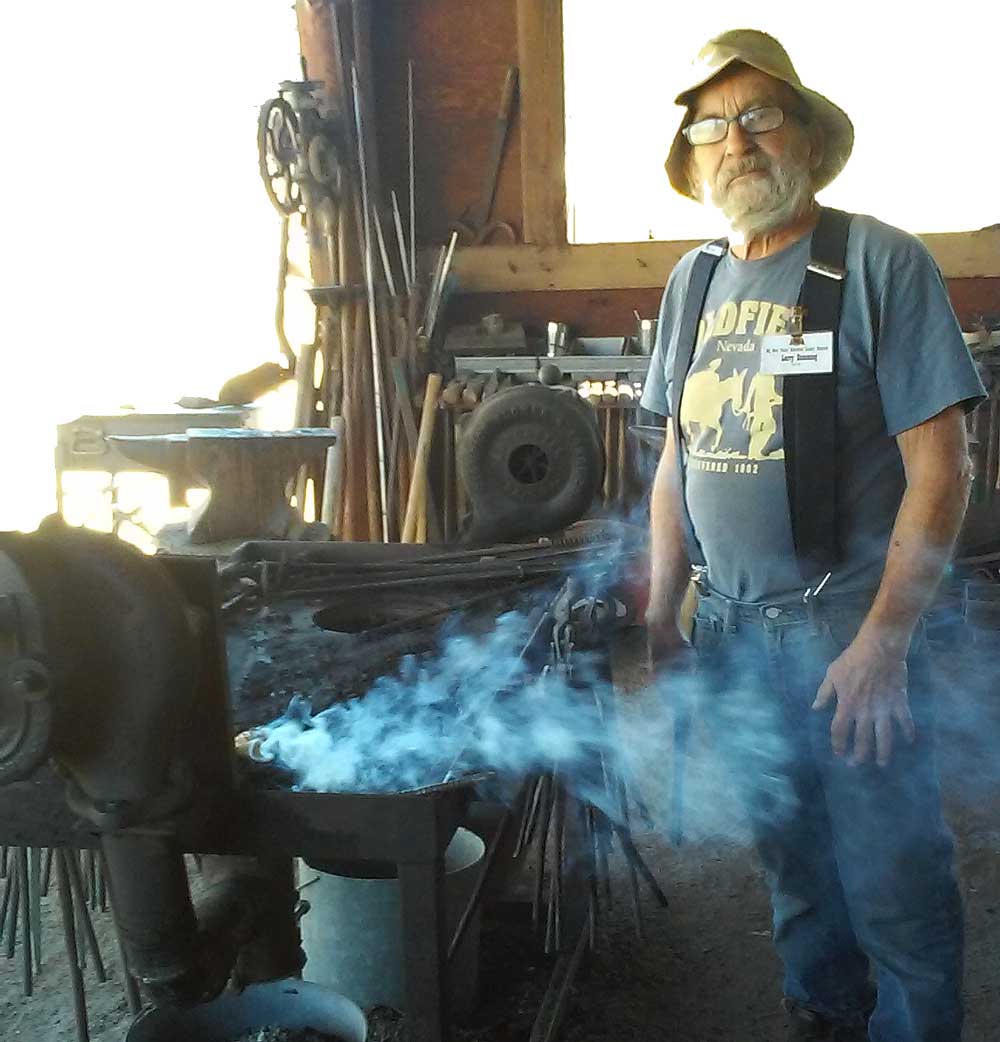 Thanks to the Big Bear Museum, friendly docents, and an afternoon of poking around, I am now ready for all the questions the students want to ask about the area. Big Bear is an interesting town with a colorful history, ready to be explored! If you ever have some time, check out the museum, sip on a sarsaparilla, and get your own butter knife made for you by the blacksmiths, you won’t regret it!
Thanks to the Big Bear Museum, friendly docents, and an afternoon of poking around, I am now ready for all the questions the students want to ask about the area. Big Bear is an interesting town with a colorful history, ready to be explored! If you ever have some time, check out the museum, sip on a sarsaparilla, and get your own butter knife made for you by the blacksmiths, you won’t regret it!
Check it out
Location: 800-B Greenway Dr. Big Bear City, CA 92314
Phone: 909.585.8100
Hours: Sat/Sun/Wed/Holidays from Memorial Day through mid-October
http://bigbearhistory.org/
At High Trails Outdoor Science School, we literally force our instructors to write about elementary outdoor education, teaching outside, learning outside, our dirty classroom (the forest…gosh), environmental science, outdoor science, and all other tree hugging student and kid loving things that keep us engaged, passionate, driven, loving our job, digging our life, and spreading the word to anyone whose attention we can hold for long enough to actually make it through reading this entire sentence. Whew…. www.dirtyclassroom.com

Comments are closed.